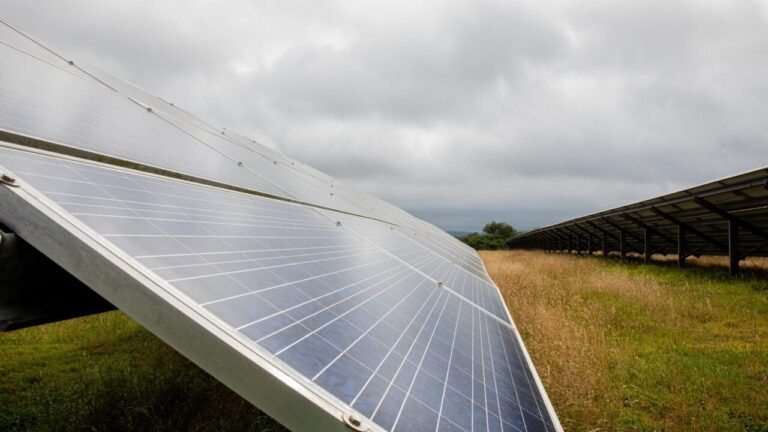RES, a British renewable energy company, has submitted a planning application for a new 49.9 MW solar farm to South Oxfordshire District Council.
If planning permission is granted, RES claims the Nuneham Solar Farm site could supply more than 13,000 homes with electricity and save around 20,000 tonnes of CO2 emissions annually.
The site is designed in such a way that agricultural use on the land, namely sheep farming, can be continued. In addition, the project includes the construction of 2.7 km of hedges and the planting of native trees to support biodiversity in the area.
Claire Chamberlain, development project manager at RES, said: “Improving local biodiversity is important to RES, as evidenced by a comprehensive landscape masterplan we submitted alongside our planning application. This sets out the short and long term commitments for planting management and other landscape measures, and demonstrates how our Nuneham Solar Farm proposal has the potential to deliver a net biodiversity gain of 70%.
“Solar energy projects can be deployed quickly, enable more energy to be generated domestically, improve security of supply and contribute to net zero targets. They are also the cheapest form of new electricity generation, among other sustainable technologies, making developments like Nuneham not only good for the environment but also for consumers.”
Obtaining public support
Solar farms have become a hot topic in recent months, with Energy Security Minister Clair Coutinho recently releasing a statement calling on municipalities to refuse planning permission for solar farms on prime agricultural land.
Meanwhile, some citizens object to the development of solar farms in rural areas. A 49MW solar farm in Northamptonshire was recently refused planning permission after locals raised concerns about the development’s impact on the character and appearance of the landscape.
Throughout the design process for the Nuneham Solar Farm, RES took community feedback into account. Changes have been made to previous proposals, including the relocation and removal of solar infrastructure to reduce the overall size of the site, installing solar panels a minimum distance of eight meters from public rights of way and additional planting along parts of public sidewalks. to reduce the visibility of the site and increase biodiversity.
Solar parks have been shown to have a positive impact on biodiversity. A recent report from Solar Energy UK declared solar farms “biodiversity havens” and noted that they play an “important role” in nature recovery. Vulnerable species, including yellowhammers, starlings and brown hares, thrive on solar farms.
Solar Power Portal’s publisher Solar Media will host the UK Solar Summit on June 4-5, 2024 in London. The event will explore Britain’s new utility and rooftop solar landscape, look at the opportunities within a GW+ annual market, and much more. For more information, go to the website.


